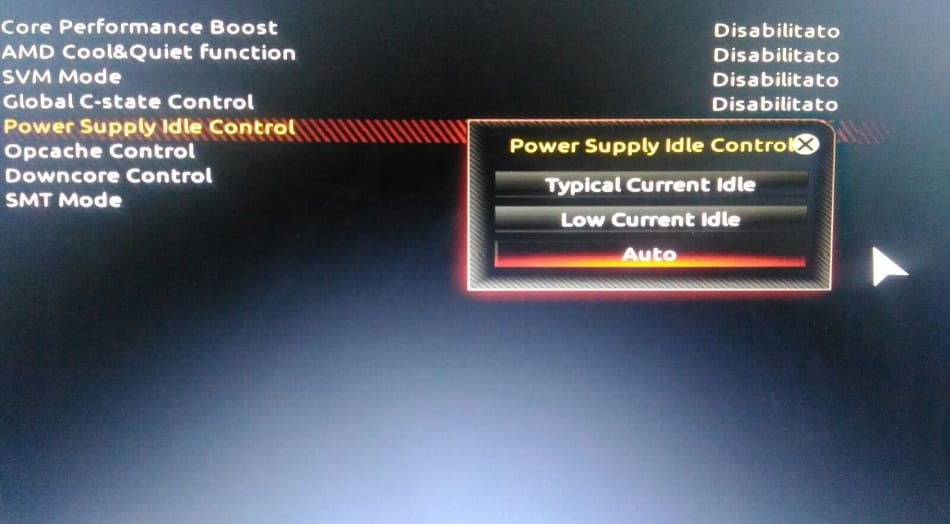Do you want to improve your computer’s energy use and lower your power costs? Power supply idle control is an often disregarded parameter in your computer’s BIOS that can hold the key to reaching these objectives.
While your system is not in use, this parameter regulates how your power supply manages voltage and energy use. As a result, you can improve your computer’s performance and lower its energy usage by being aware of the many choices available and when to adjust them.
In this post, we’ll examine power supply idle control in more detail and discuss how it may assist you in managing your computer’s energy use.
What is Power supply idle control?
“Power supply idle control” is a setting you could have encountered if you’ve accessed your BIOS settings. Although this option may appear complex and challenging initially, it becomes easy once you know what it does.
We must first comprehend how power supplies function to comprehend power supply idle control in computers. A computer’s power supply unit (PSU) transforms the AC voltage from the wall socket into a DC voltage that the computer’s components may use. The motherboard, graphics card, storage devices, and other system components are all powered by the PSU.
A computer uses relatively less power while idle or not actively working on any activities. However, the PSU still gives the components the same power as during regular use. Energy is wasted as a result, and the extra heat is produced, which can shorten the life of the power supply and raise electricity costs.
Power supply idle control was created to solve this problem. This function enables the PSU to keep track of the activities on the computer and modify its power output as necessary. The PSU lowers its power output while the computer is not in use, which decreases energy use and heat production. The PSU raises its power output to suit the system’s needs as soon as the computer starts up again.
Power supply idle management is crucial for increasing computers’ energy efficiency and lowering their environmental impact. Also, it complies with energy-saving requirements like 80 PLUS, a certification scheme that encourages the use of energy-efficient computer power supply. As a result, reduced energy waste and improved 80 PLUS certified power supply efficiency lead to cheaper electricity costs and a better environment.
What are the various options in Power supply idle control, and what do they mean?

The Power supply idle control setting in BIOS typically has three options: typical, low, and auto.
- Typical: The typical setting is the default for most systems and ensures that your power supply will keep up with typical voltage and power demands even when your system is not in use.
- Low: When set to the low setting, your power supply will use less voltage and power while your system is not in use. This can aid in lowering your system’s overall power and energy use.
- Auto: The auto setting is the most versatile option, enabling your system to automatically alter its power supply idle control settings per your system’s load and consumption patterns. Depending on how you use your computer, this could help you optimize power usage and efficiency accordingly.
What option should you select, and when should you change it?
The option you should select in the Power supply idle control setting depends on your usage patterns and preferences. The typical setting is sufficient if you use your computer for basic tasks like web browsing and email. However, the low or auto settings may be more appropriate if you’re using your computer for more intensive tasks like gaming or video editing.
It’s also worth noting that changing the Power supply idle control setting can impact your system’s overall performance and energy usage. So adjusting this setting may be worth considering if you’re experiencing performance issues or noticing high energy bills.
How to find and use the Power supply idle control setting in a computer’s BIOS?
To find and use the Power supply idle control setting in a computer’s BIOS, follow these steps:
- Turn on or restart your computer and access the BIOS settings. The key to access the BIOS settings may vary depending on your system, but it’s usually F2, F10, or Del.
- Once you’re in the BIOS settings, look for the Power Management or Hardware monitor section. The location and name of the Power supply idle control setting may vary depending on your BIOS version and motherboard manufacturer, but it’s usually located in one of these sections.
- Locate the Power supply idle control setting and select it. You may need to navigate through sub-menus or use arrow keys to find it.
- Choose the option that best fits your usage patterns and preferences. As discussed earlier, the options available are typical, low, and auto.
- Save your changes and exit the BIOS settings. The key to save and exit the BIOS settings may vary depending on your system, but it’s usually F10 or Esc.
Check your system’s stability and performance after changing the Power supply idle control setting to ensure the modifications don’t have a detrimental impact.
It’s essential to remember that not all systems may support or advise altering the Power supply idle control setting, and depending on your system, the exact methods may change. If you have any questions about how to access or utilize the BIOS settings, you should always consult your system’s instructions or get support from the maker of your computer.
What are some potential drawbacks or risks of changing the Power supply idle control setting?
While adjusting the Power supply idle control setting can potentially save energy and reduce heat generation, there are also some potential drawbacks or risks to consider:
1. Performance Impact: Changing the Power supply idle control setting can impact your system’s overall performance, exceptionally if you choose the low setting. This can lead to slower response times and reduced productivity.
2. Compatibility Issues: Some systems may not be compatible with specific Power supply idle control settings, resulting in instability or crashes.
3. Component Wear and Tear: While reducing power consumption during idle periods can help prolong the lifespan of your components, it’s worth noting that constantly changing voltage levels can also contribute to wear and tear over time.
4. BIOS Updates: Updating your BIOS or firmware can reset your Power supply idle control settings to default, which can be frustrating if you’ve spent time customizing them.
Overall, weighing the potential benefits and risks before changing the Power supply idle control setting is crucial, as testing your system’s stability and performance after making any changes.
How can you determine whether changing the Power supply idle control setting saves you energy?
Adjusting the Power supply idle control setting can save energy and lower electricity bills. In this context, using a power meter, built-in power monitoring tools, and comparing electricity bills can help you track the power consumption before and after changing the Power supply idle control setting.
Use a power meter: A power meter is a tool that calculates how much electricity your computer is using. To see if there is a noticeable difference, use a power meter to compare your system’s power usage before and after altering the Power supply idle control setting.
Use built-in power monitoring tools: Most operating systems include power monitoring tools built in, that let you see how much energy your system is consuming. These tools can be used to track your system’s power use, both before and after modifying the power supply idle control setting.
Compare electricity bills: If you’re interested in lowering your power costs, you can examine the difference between your bills before and after modifying the Power supply idle control option, but the changes are minute to reflect on the bills.
It’s important to note that depending on your usage habits, the components in your system, and the precise Power supply idle control setting you select, the amount of energy you may save by modifying the Power supply idle control setting may vary. Yet, keeping an eye on your system’s power use might help you determine whether your adjustments have a real impact.
What are the benefits of mastering Power Supply Idle Control, and how can it help you optimize your computer’s energy usage?
Mastering Power Supply Idle Control can assist you in optimizing your computer’s energy use in various ways. For example, you can conserve energy and minimize the amount of heat generated by your computer by altering the voltage and power consumption levels during idle periods, which can lead to many benefits such as:
- Reducing your electricity bills: You can save money on electricity costs by lowering your system’s total power usage.
- Prolonging the lifespan of your components: You can extend the lifespan of your components by lowering wear and tear.
- Contributing to a greener and more sustainable lifestyle: You can contribute to a more sustainable lifestyle by lowering your carbon footprint.
Conclusion
In conclusion, understanding and optimizing your computer’s power supply idle control is an excellent way to save energy and reduce electricity costs while extending the life of your computer components. Changing the Power supply idle control setting can reduce energy waste and heat production while improving your system’s performance and efficiency. However, it’s essential to select the right option for your usage patterns and preferences and be aware of the potential drawbacks or risks.
Always consult your system’s instructions or get support from your computer manufacturer if you have any questions about accessing or utilizing the BIOS settings. Considering these considerations, you can make informed decisions about power supply idle control and reap the benefits of a more efficient and cost-effective computer.
Riya Mishra is an entrepreneur, author, and blogger who lives in MP, India. She completed her BBA degree at Banasthali Vidyapith and went on to work as a content specialist at various companies in her city. She is currently working as a content writer at Apple Inc and is also the founder of Black Tie Events, a company for artists. Riya loves researching-writing and her works have been published by top sites like The Times Of India, thesocialcomment.com, and many more.

